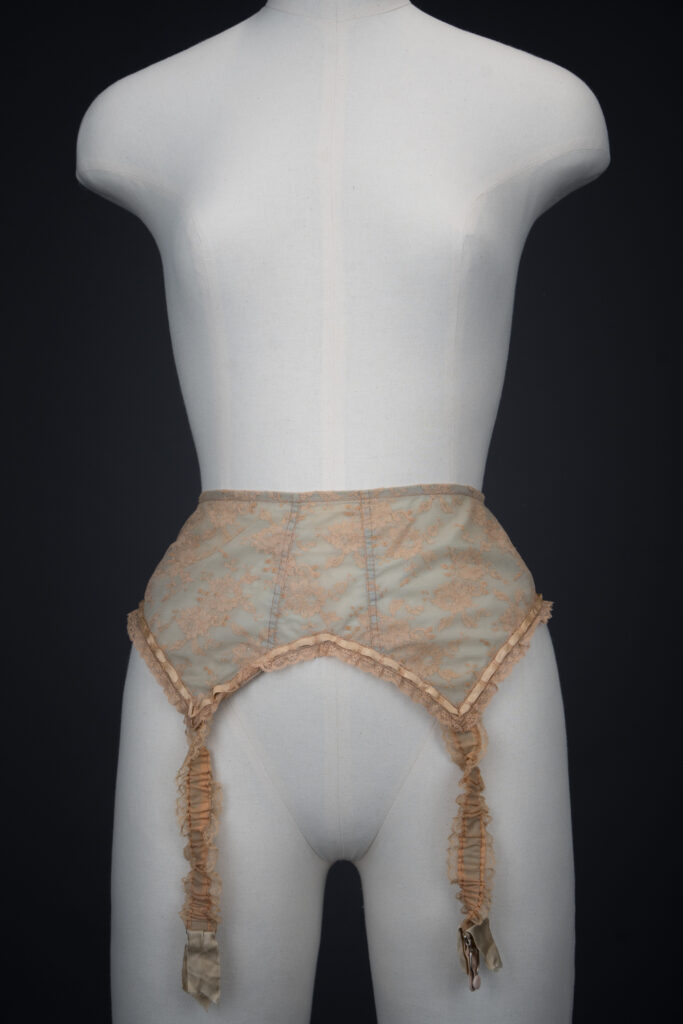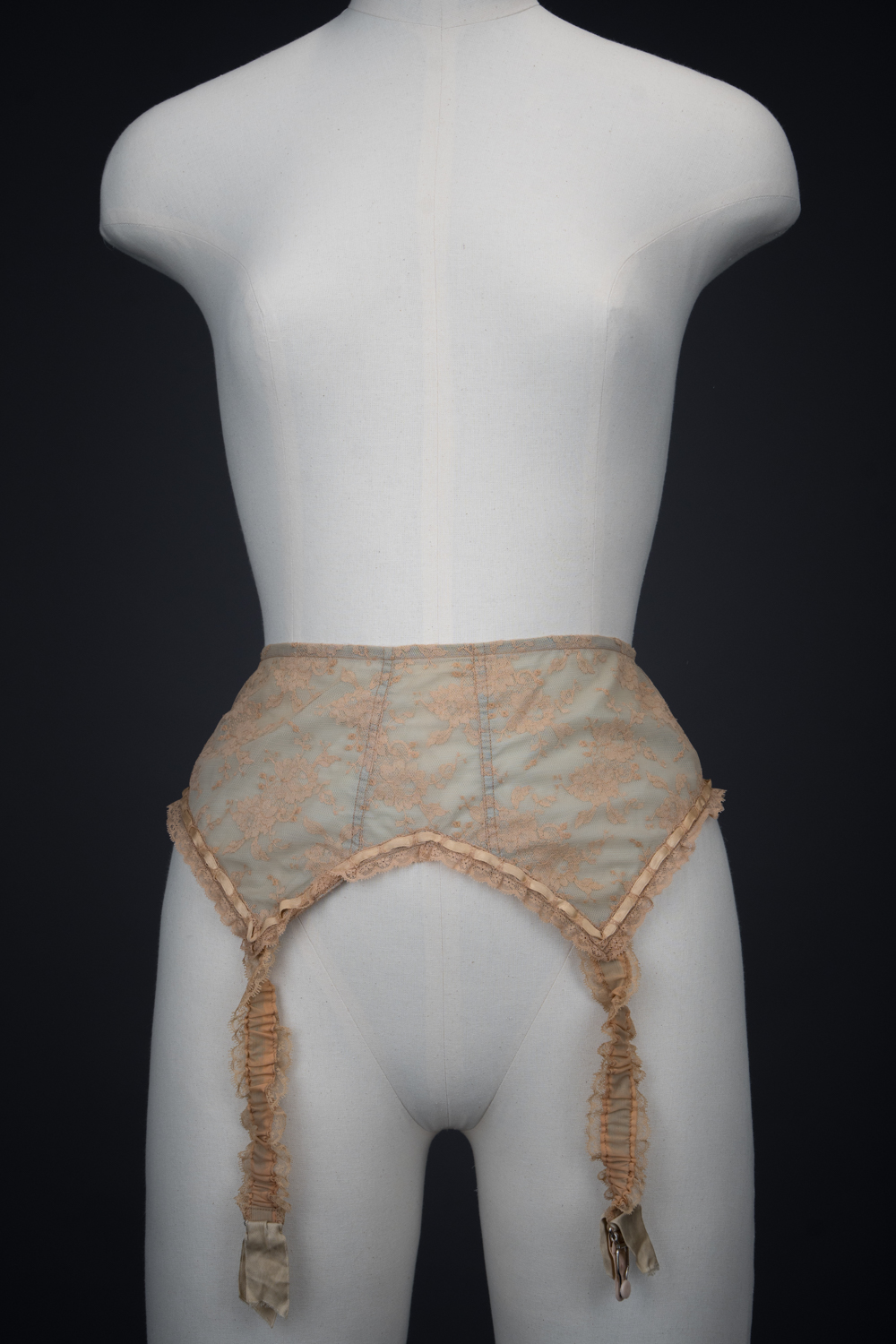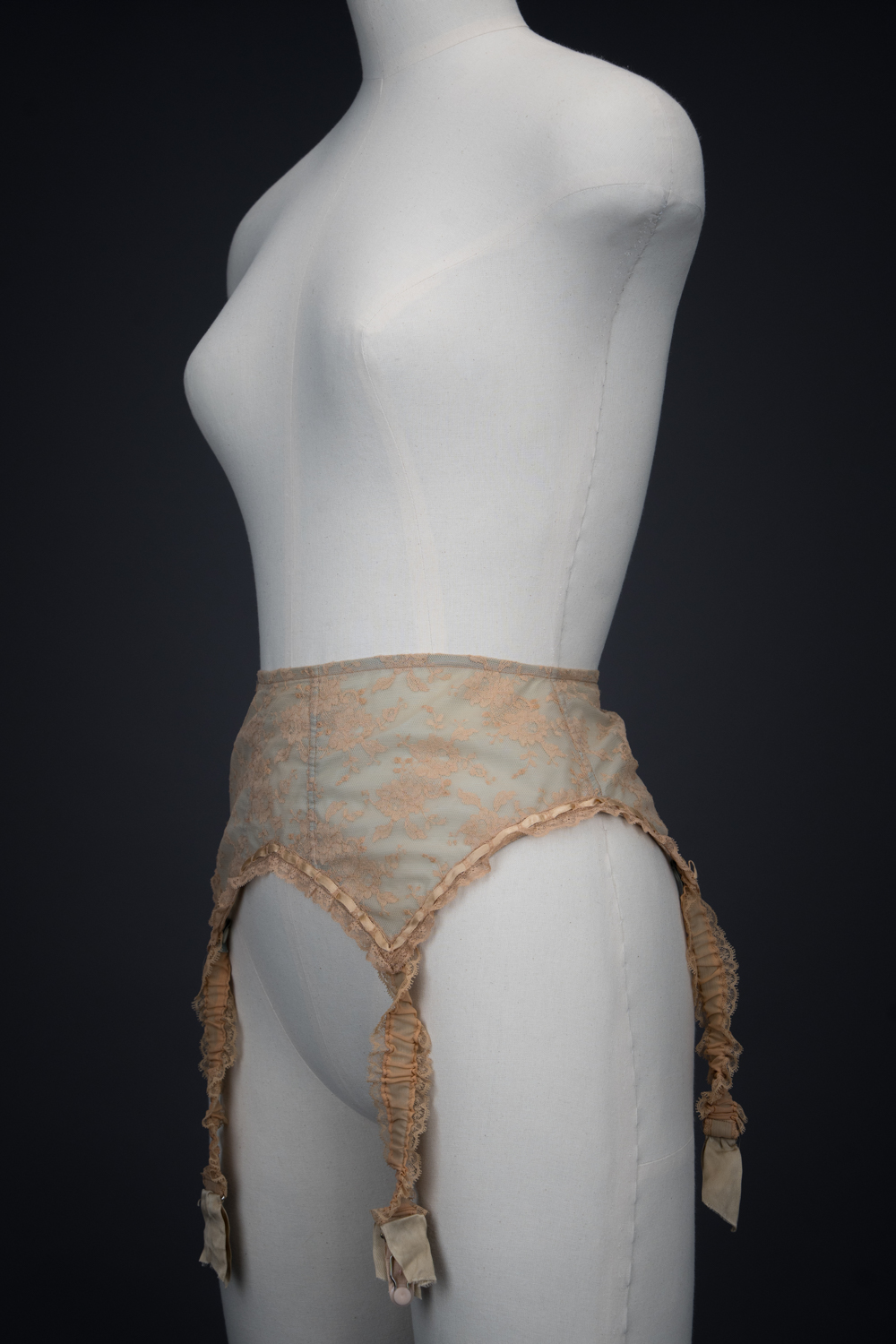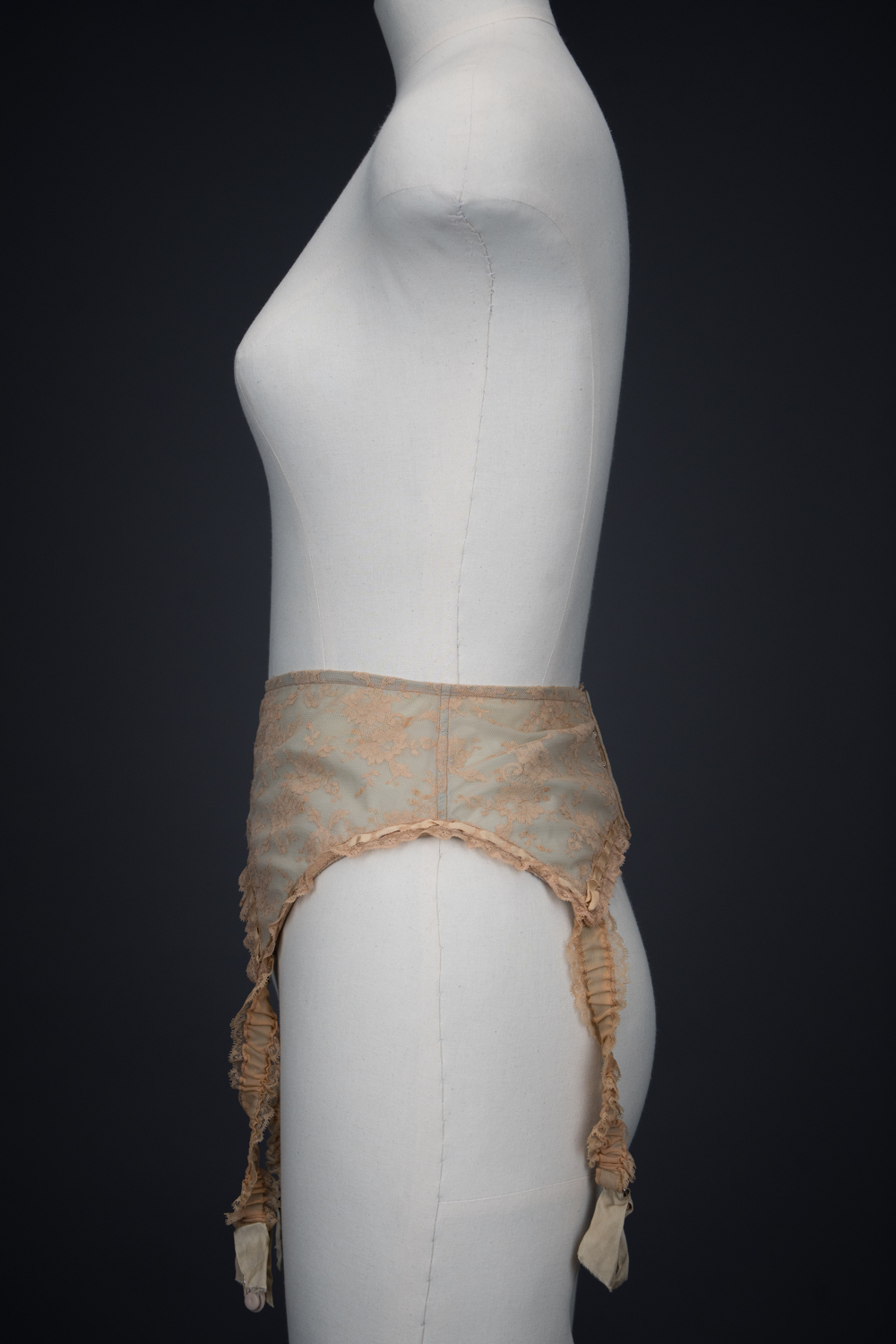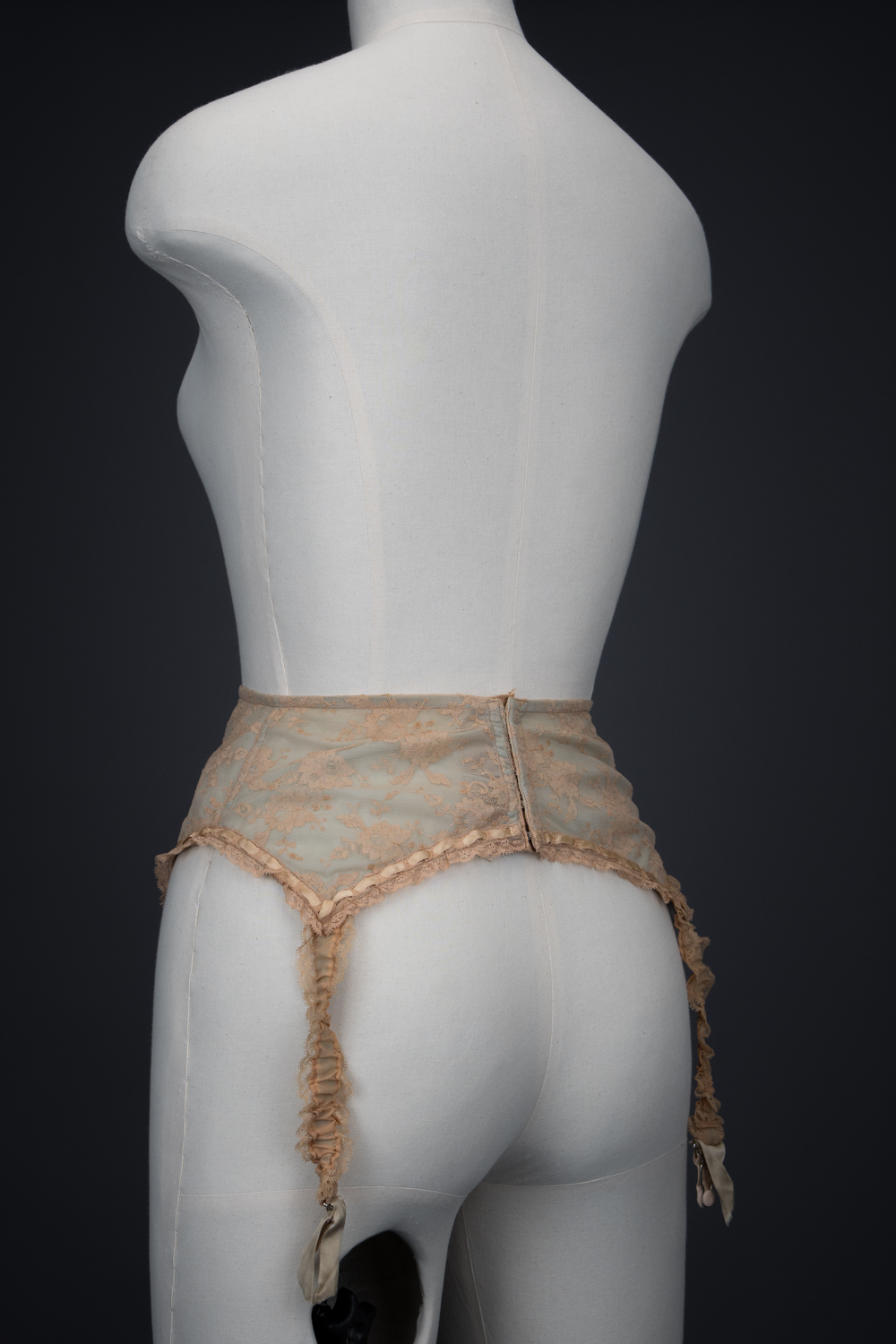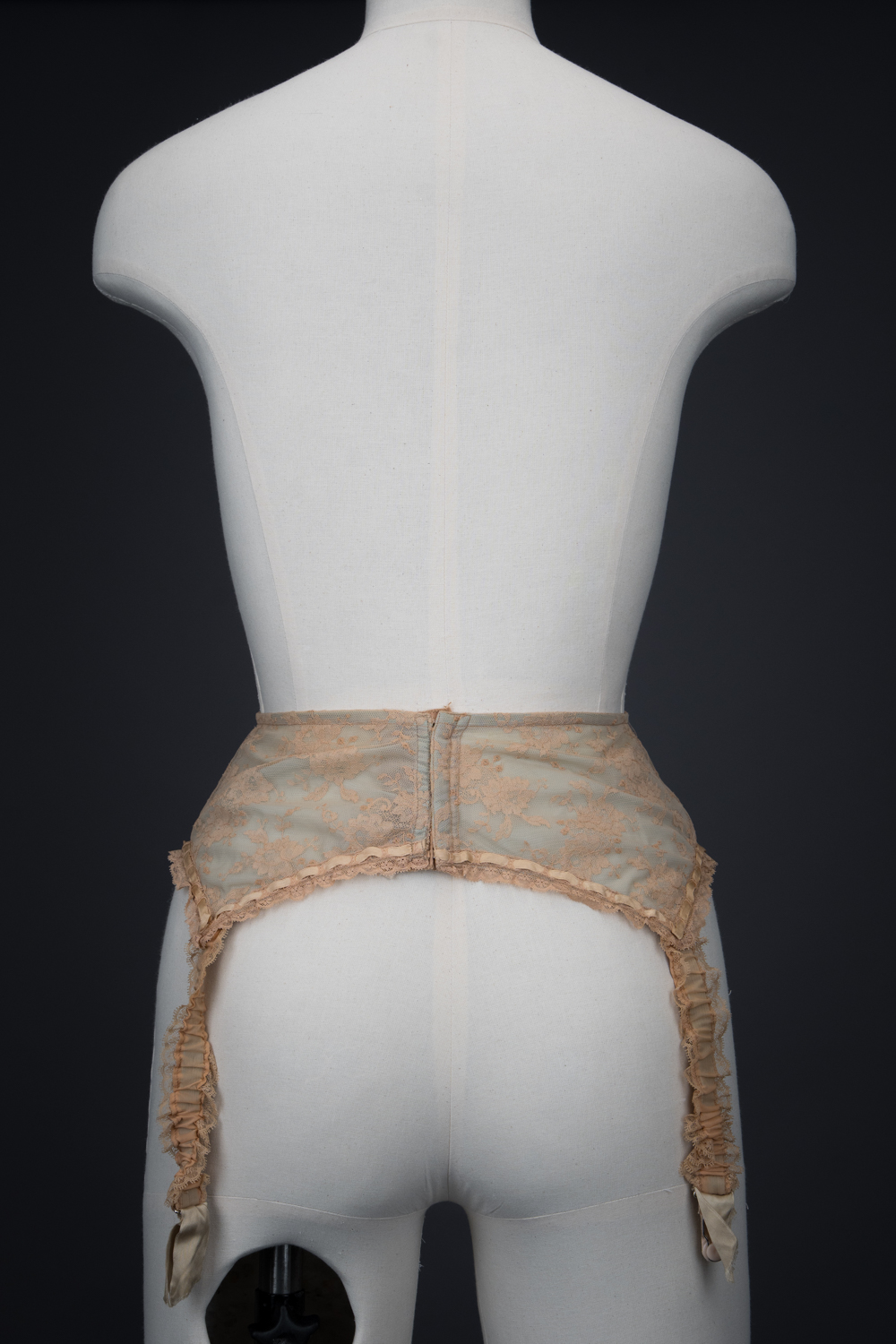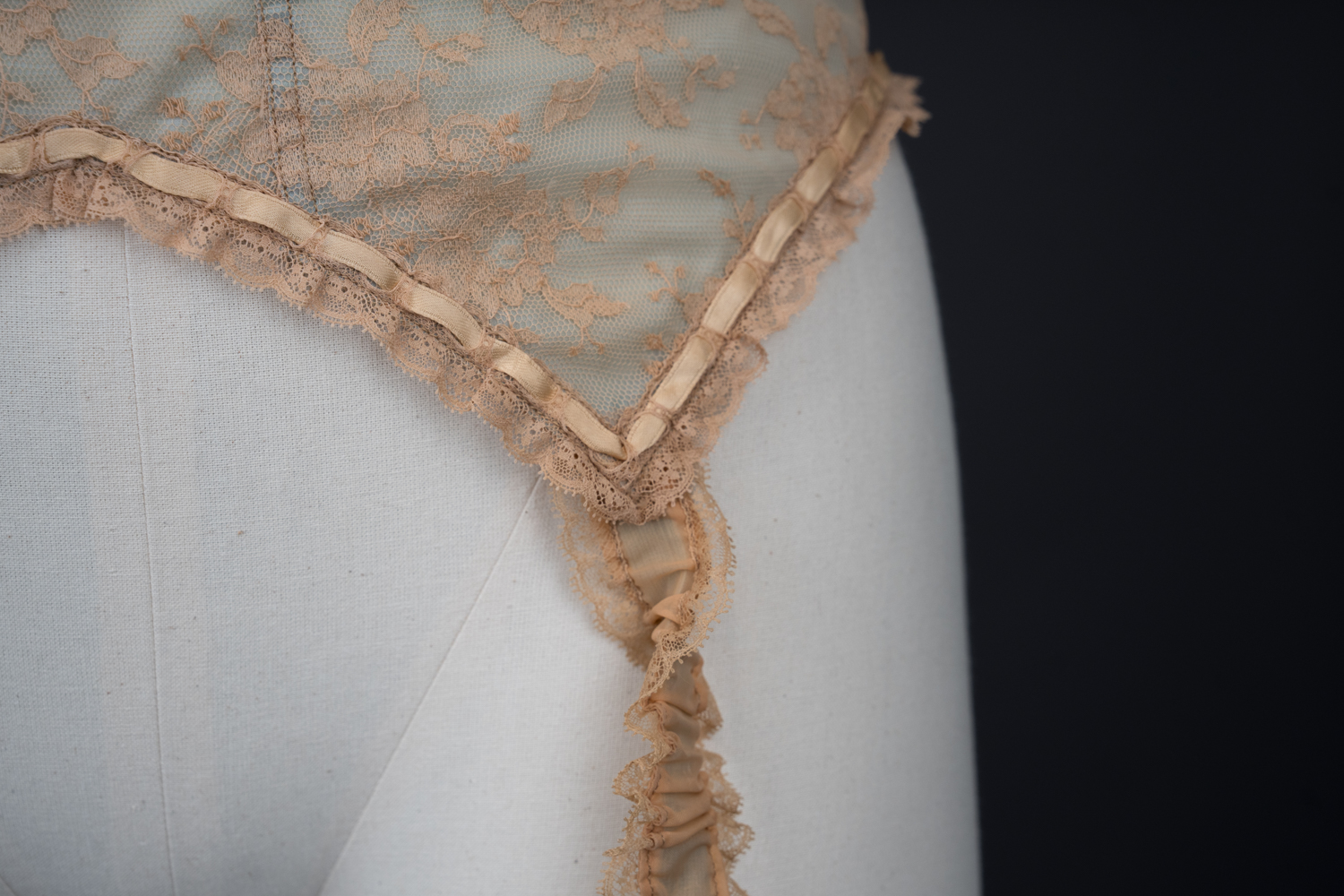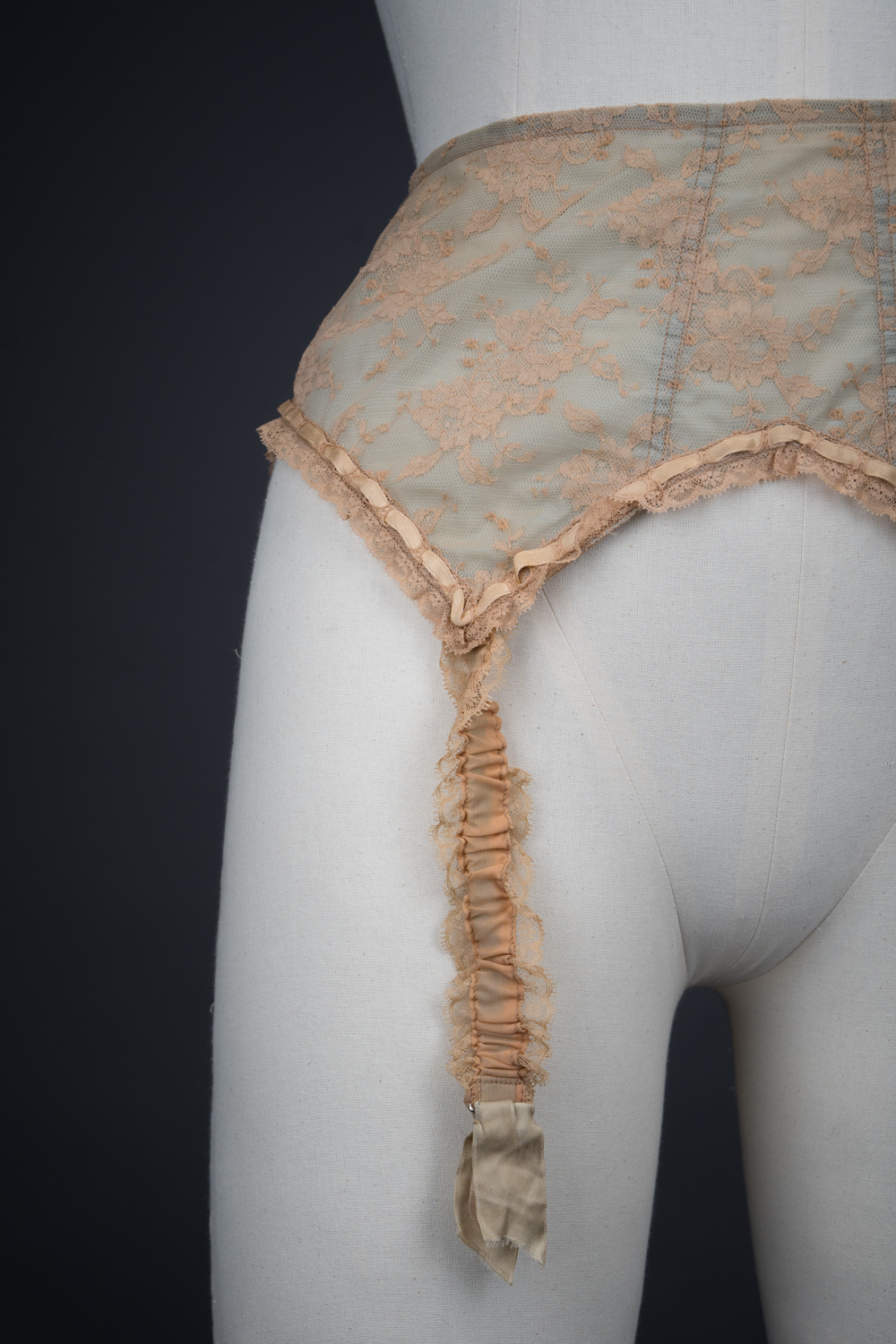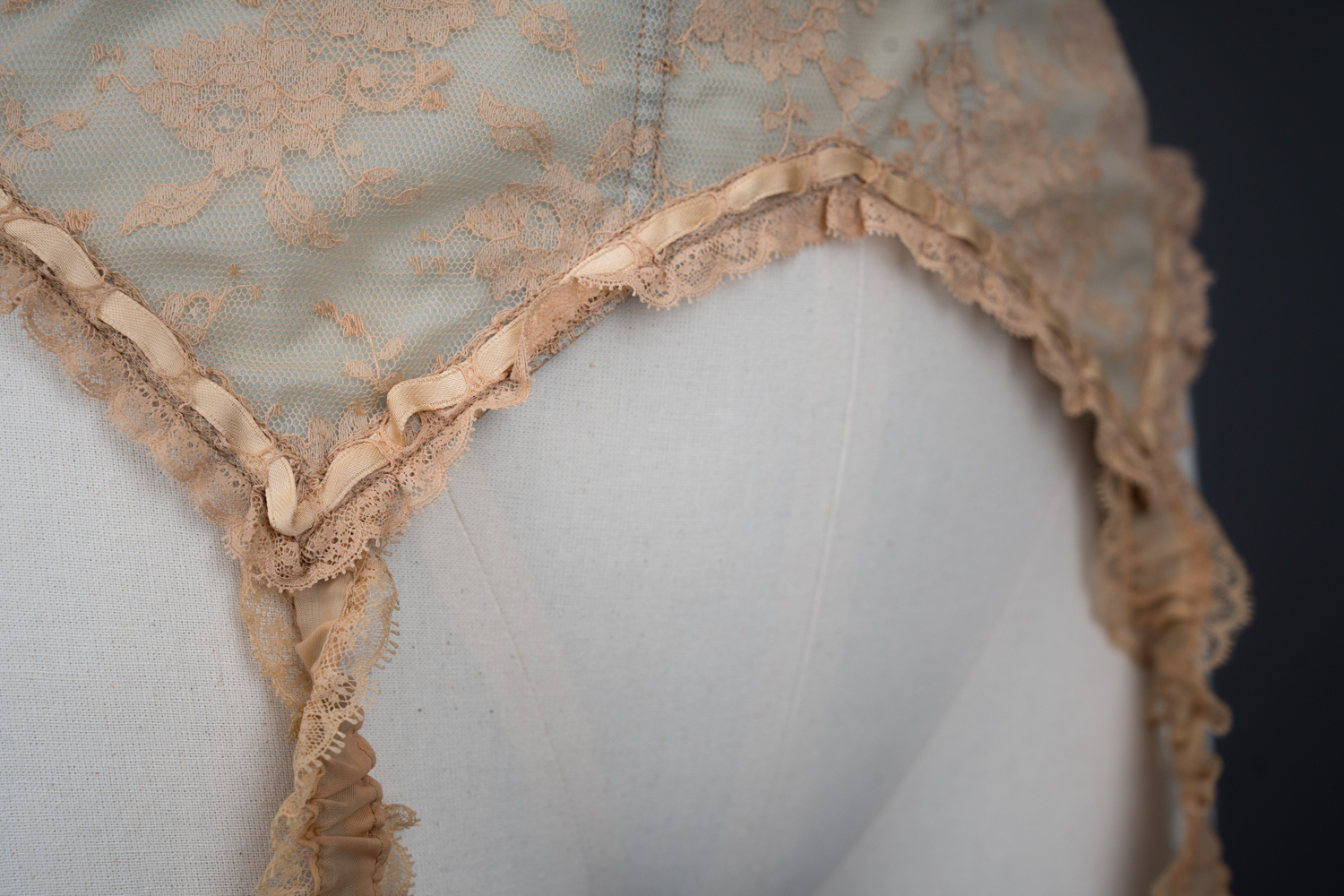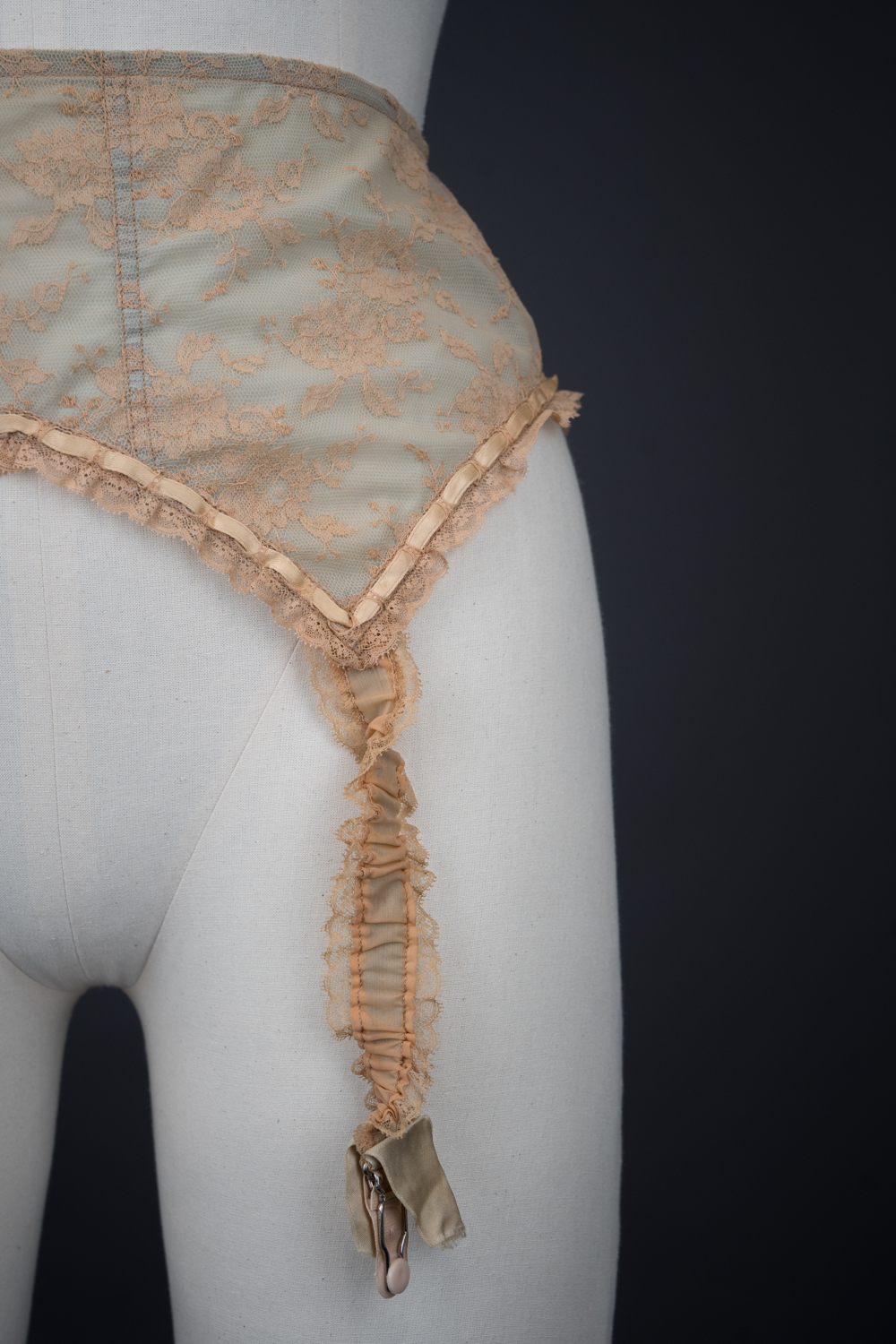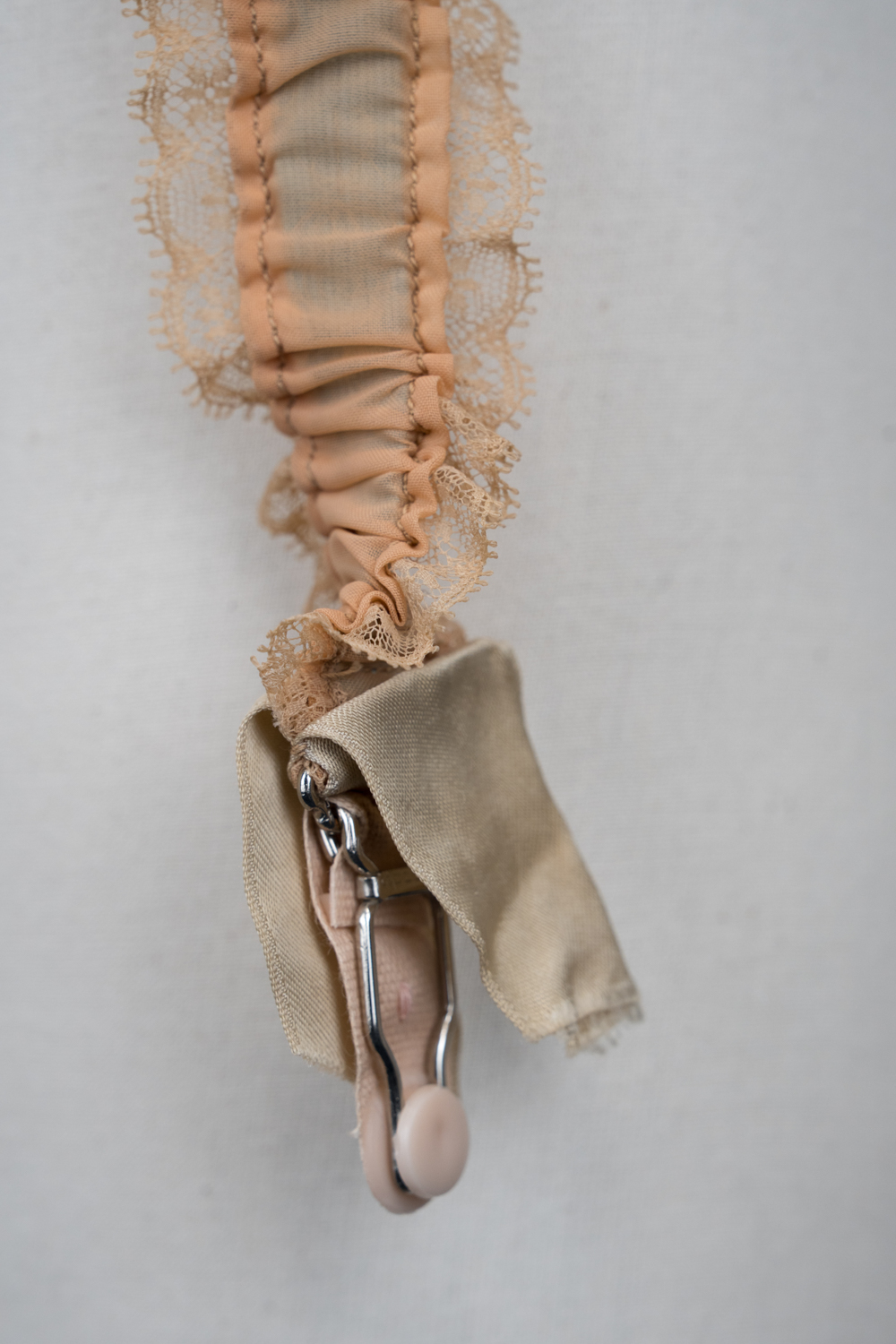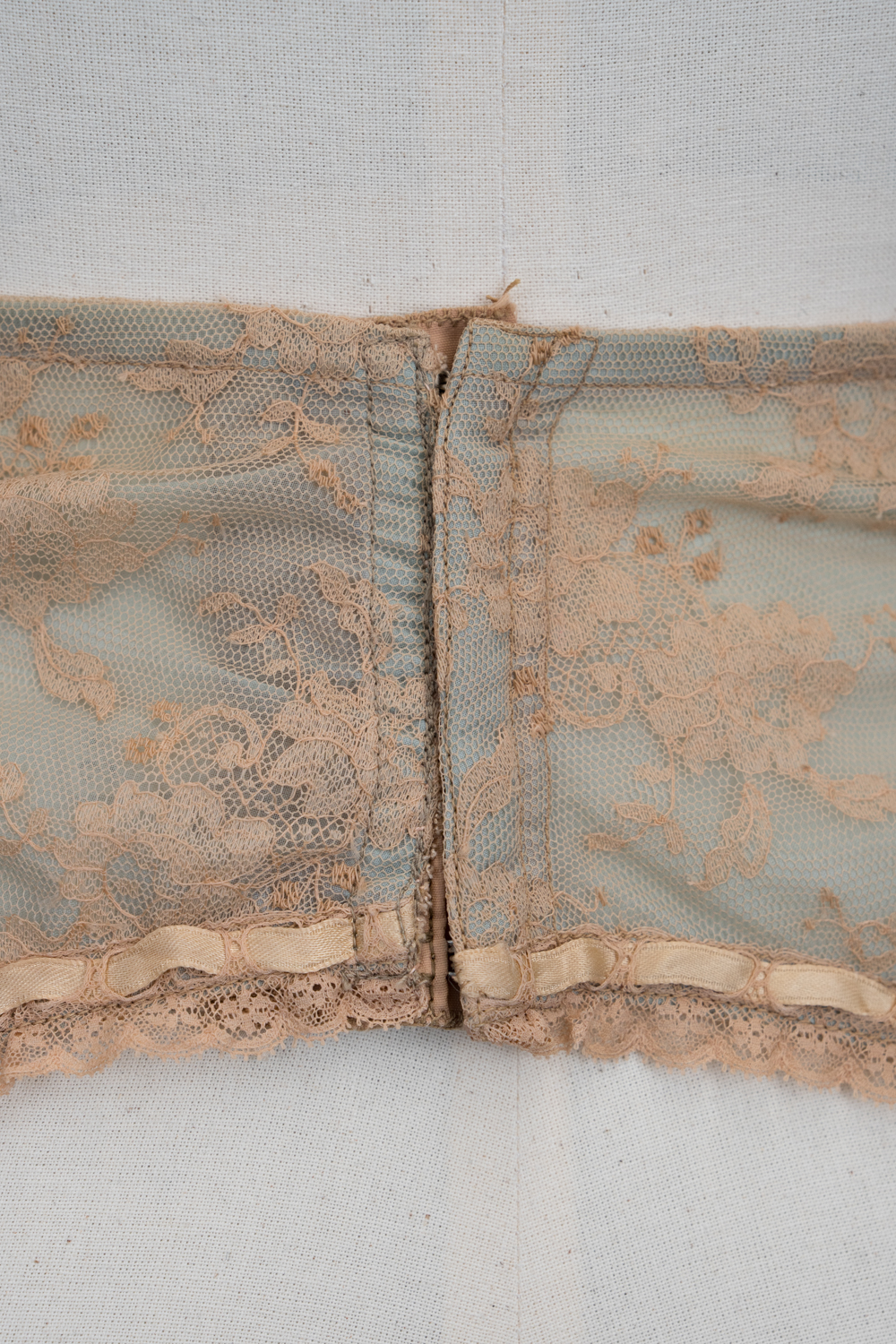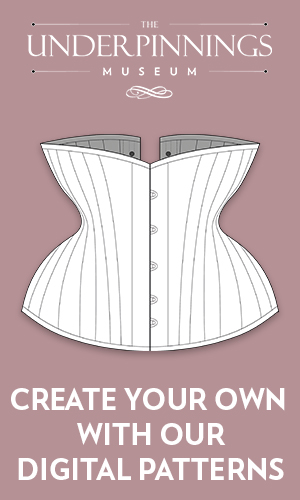Date: c. 1950s
Origin: France
Fabric: Machine lace, woven nylon
Brand: Marie Rose Lebigot
A suspender belt made of a machine-made Leavers lace, lined with woven nylon in an eau de nil shade. It is trimmed with a ribbon slot lace, threaded with a cream satin ribbon. The suspender straps are made of channels of beige woven nylon, edged with a lace trim. The channels are threaded with button hole elastic, which are adjustable on the interior of the garment with hidden buttons. The suspender belt fastens with hooks and eyes at the centre back. It has been altered, with a part of the centre back panel cut away, and the eye half of the fastening restitched somewhat crudely in what appears to be a home alteration. This style was originally made by the Marie Rose Lebigot brand for their USA-based stockist, Saks Fifth Avenue.
Although no longer well-known today, Marie-Rose Lebigot was a world-renowned corsetiere in the mid-twentieth century. She learned everything about corsetry from her mother, who was the original founder of her foundation garment business. Lebigot apprenticed under her mother who taught her anatomy, sculpture, and painting as a child and how to apply these subjects to designing for the female form. Marie-Rose took over the company in the early 1930s, and by 1951, was creating custom foundation garments for the presentations of famous Parisian couturiers, Paquin, Fath, Heim, and Lecomte, among others. In 1951, she was introduced to American consumers when she became affiliated with Lily of France, for whom she created brassieres and girdles. Lily of France was the sole distributor of Lebigot’s designs, which were all made in Paris. Additionally, Lebigot’s work was featured in several French films, including Êdouard et Caroline (1951), where she designed lingerie, and Casque d’Or (1952), where she was credited as the corset designer. She was among the designers experimenting with lingerie that enhanced the bust, a trend that gained prominence in the mid-20th century, and reportedly collaborated with Madame Carven on a push-up bra design, though others were exploring similar innovations, including Frederick Mellinger of Frederick’s of Hollywood.
Many thanks to Ellen Greene for the research.
From the collection of Karolina Laskowska
